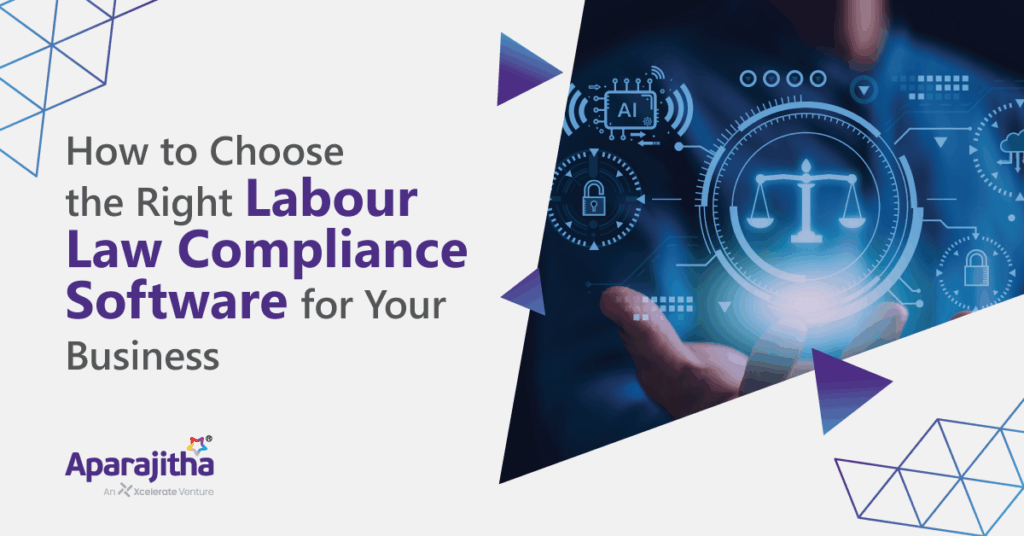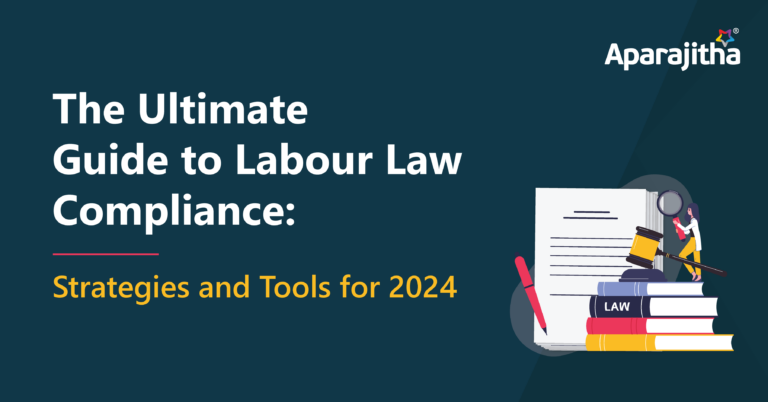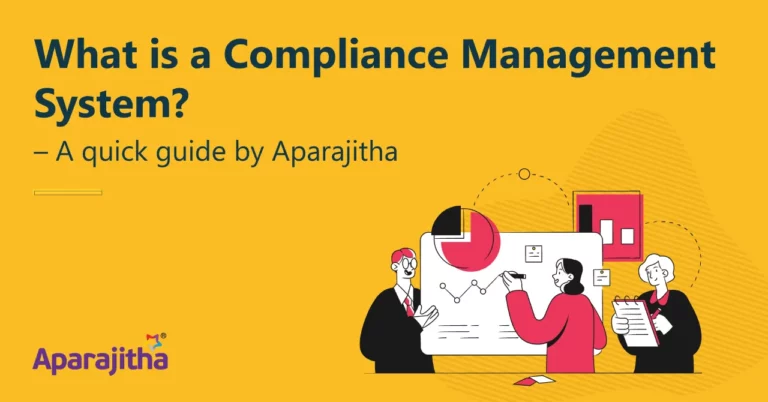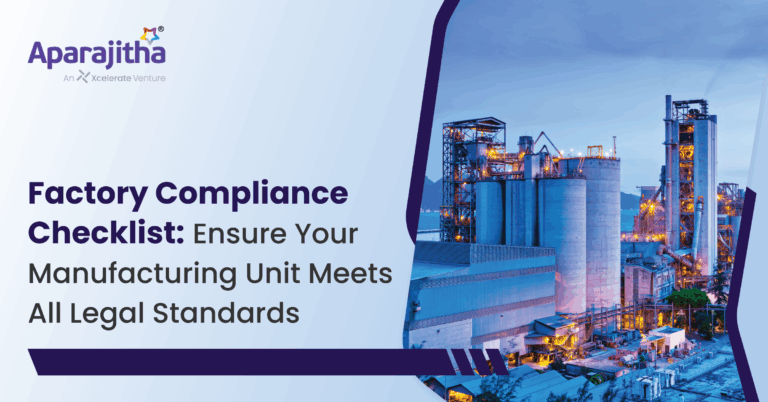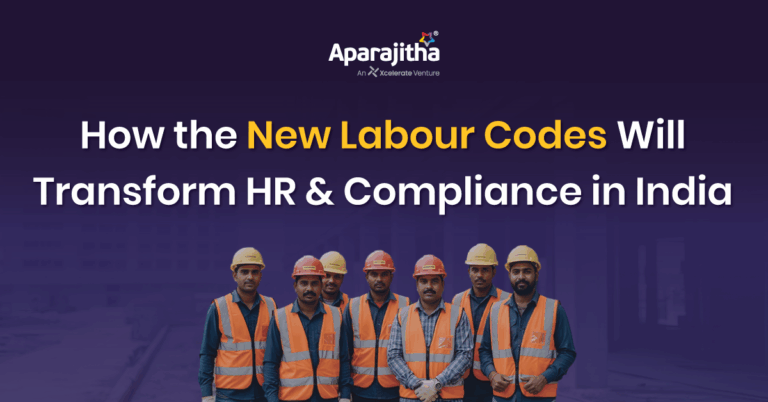Labour law compliance is challenging, especially for small and medium-sized companies that are just starting up. While staying updated with the constantly changing laws and regulations, HR personnel also have to ensure that employee statutory records are maintained, policies are up to date, and payroll is managed.
Why Manual Compliance Tracking Falls Short
Without the right tools, compliance tracking can be daunting and may lead to serious consequences if not managed properly. This is where digital compliance solutions, such as labour law software, can make a significant difference. Whether by outsourcing compliance to experts who leverage such tools or by implementing HR compliance software in-house, businesses can streamline operations through a single system that manages document control, compliance tracking, statutory record-keeping, and other critical compliance-related tasks.
Unlocking Efficiency with Digital Compliance Solutions
Beyond streamlining day-to-day processes, labour law compliance software also plays a critical role in proactively managing risks and ensuring audit readiness. These solutions help businesses stay responsive to frequent legal updates by automatically reflecting changes in central and state laws.
Modern compliance management systems have evolved to do more than just track deadlines—they can detect potential gaps in existing processes, flag outdated procedures, and provide alerts to prevent non-compliance. With features like automated legal updates, integrated compliance calendars, and customizable workflows, they empower HR teams to shift from reactive to strategic compliance management.
A reliable labour law compliance software should come equipped with a comprehensive set of compliance software features that help organisations effectively manage their regulatory responsibilities. Some of the essential capabilities to look for include:
- Reporting and analytics dashboard for better decision-making
- Document management
- Central repository of knowledge that is configured with all applicable tasks across various laws and is constantly updated with the latest amendments
- Automated alerts for compliance deadlines
- Audit and inspection management
- Accurate and hassle-free digitised payroll compliance
- Strong security and data protection measures
These core features ensure that businesses can proactively manage compliance, reduce risk, minimise manual work, and boost overall HR productivity, while staying aligned with evolving legal requirements.
How to choose the right labour law compliance software?
HR compliance software helps organisations stay compliant with employment laws and regulations at the local, state, and central levels. With today’s technological advancements, businesses can customise these tools to suit their specific needs. While basic software may assist with essential tasks like payroll processing, advanced solutions go a step further, offering auto-updates on due date extensions, real-time compliance tracking, insights into compliance status, and enhanced audit readiness.
To select the right solution for your organisation, here are the key steps to follow:
1. Start by Identifying Your Business’s Unique Compliance Needs: The first step in choosing the right software for labour laws are to clearly define your organisation’s specific compliance requirements. Consider factors such as the size and scale of your operations, the industry you’re in, geographical spread (especially if you operate across multiple states with varying laws), the complexity of your compliance requirements, workforce composition (permanent, contractual, gig, etc.), existing HR and payroll systems, and the volume and frequency of compliance tasks. Understanding these elements will help you determine what kind of compliance support your business needs, which laws and regulations apply, whether compliance should be managed internally or outsourced, and the internal bandwidth required . This assessment also helps pinpoint the gaps that a compliance automation tool needs to fill. Once your local, state, and central compliance needs are mapped out, you’ll be better positioned to evaluate and match them with the right software capabilities.
2. Compare Features That Align with Your Compliance Goals: After identifying your business’s compliance needs, the next step is to evaluate the features offered by different software solutions. Focus on selecting a platform that not only meets immediate requirements but also supports your long-term compliance strategy. A good compliance solution should be scalable to accommodate future business growth, regulatory changes, and workforce expansion. Beyond essential capabilities, look for features that help reinforce accountability across teams, such as role-based access, activity logs, audit trails, automated reminders tied to responsibility, and contingency risk analysis with detailed reports to support proactive compliance management.
Tools that facilitate centralized documentation, compliance calendars, and compliance trackers also help standardize processes and reduce the risk of inconsistencies.
Ensure the software offers strong data protection, aligns with your industry’s regulatory framework, and can be seamlessly integrated with your existing HR or payroll systems. Finally, advanced reporting and analytics features can help you identify compliance gaps early and make informed, proactive decisions.
3. Evaluate Managed Services for End-to-End Compliance Support: In addition to software features, consider choosing a provider that offers managed compliance services—partners who go beyond just offering a platform by conducting thorough gap analyses and delivering end-to-end compliance execution. These services can include regular audits, risk identification, and expert guidance on compliance structuring. A partner with both software and service capabilities ensures that your organisation benefits from strategic insights, actionable recommendations, and hands-on support to close compliance gaps effectively.
4. Assess Support, Training, and Service Quality: Beyond features and functionality, it’s crucial to evaluate the quality of customer support and training offered by the software provider. Look for platforms backed by responsive helpdesk services, clear escalation mechanisms, and proactive assistance during critical compliance periods.
Reading client testimonials, case studies, and independent reviews can offer insights into the real-world experience of other users. Requesting a live demo or trial version helps assess usability and suitability firsthand.
Additionally, opt for solutions that provide structured onboarding and continuous training for your HR or compliance teams. This ensures a smoother transition, faster adoption, and long-term success in managing your compliance responsibilities.
5. Prioritize Long-Term Scalability and Continuous Improvement: Choosing the right labour law compliance software isn’t just about current needs—it’s about future readiness. Opt for a solution that can scale with your business as it grows, adapts to regulatory changes, and evolves with emerging compliance trends.
Look for providers that offer regular product updates, feature enhancements, and ongoing engagement through feedback loops or user communities. Post-implementation, continue to evaluate the software’s performance in real-world scenarios—track improvements in compliance accuracy, audit readiness, and process efficiency.
This continuous improvement mindset ensures your investment remains relevant and impactful in the long run.
Choosing the right HR compliance software is more than just a legal necessity—it’s a strategic decision that enhances HR operations and drives organisational efficiency. With the right solution in place, businesses can simplify statutory processes, ensure regulatory adherence, and empower their HR teams to focus on more value-added activities.
For businesses that prefer to outsource compliance, partnering with a compliance expert team that leverages robust automation tools can offer the same efficiency and accuracy. When evaluating such partners, it’s wise to review the technology they use—this often reveals their capability and fit for your organisation.
Ready to streamline your compliance operations?
Talk to our experts today and discover how our tech-enabled solutions can simplify and secure your compliance journey.

